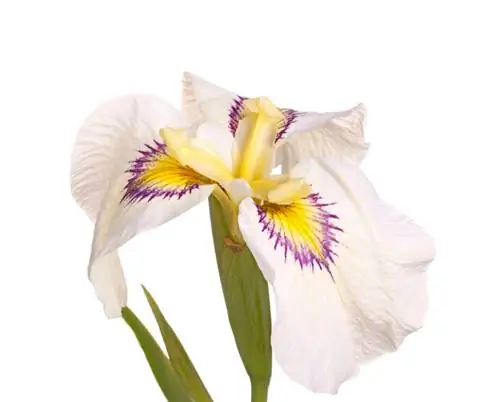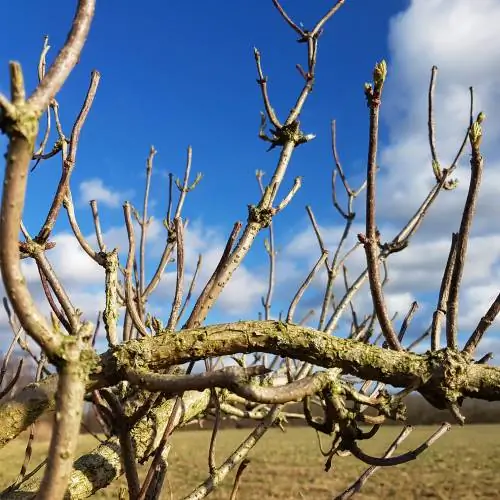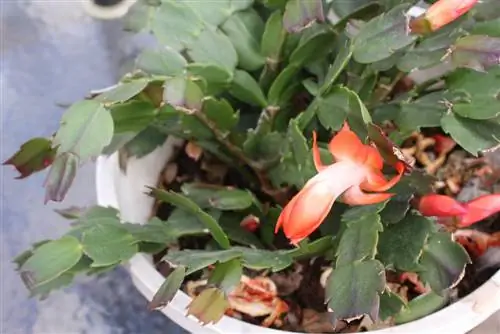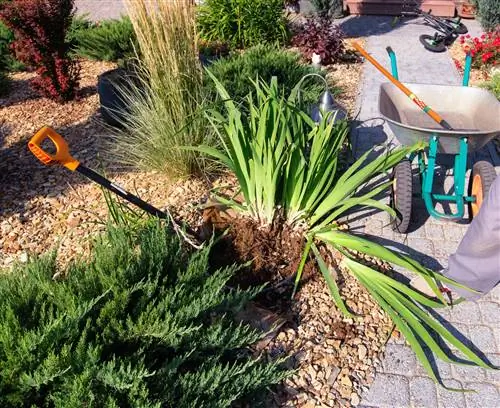- Author admin [email protected].
- Public 2023-12-16 16:46.
- Last modified 2025-01-23 11:20.
The botanical genus of iris is also known as iris in horticulture and is one of the most popular flowering plants. However, due to the strong reproductive instinct of this plant species, an undesirable spread in the garden can quickly occur if you do not take measures to contain it.
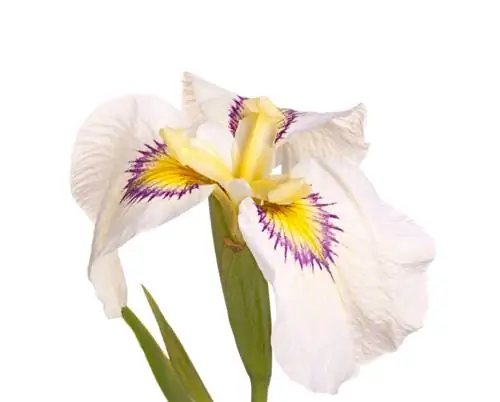
How do I cut the irises in the garden correctly?
Iris leaves should not be cut back as they are important for flower formation. After flowering, wilted inflorescences can be shortened to 8-10 cm. When dividing the rhizomes and rejuvenating them, the leaves can be shortened in half.
Cut back the leaves of the iris or not?
Due to a maximum growth height of 60 to 80 centimeters, it is usually not necessary to cut back the leaves of the iris. However, you should never do this for personal aesthetic reasons, as this can harm the growth of the plants. The leaf material of the iris must remain on the plants even in autumn, as it serves as an energy reserve for the shoots in the following year and is important for flower formation.
Cut back the flower heads of the iris
After the flowering period, the withered inflorescences of the iris do not look particularly attractive. You can then cut them back to a height of around 8 to 10 centimeters. Use a sharp and clean knife to ensure that the irises in the garden stay he althy. This care measure also serves to curb proliferation through self-sowing. Otherwise, if the seeds on the plants ripen within a few years, the iris can spread widely in the garden.
Cutting the roots during division
Larger clumps of irises are dug up and divided after several years in the same location in order to combat a decreasing number of flowers. It is advisable to pay attention to the following points when dividing:
- shortening the fine root system
- shortening the leaves
- careful planting and watering after pruning
When transplanting, the fine roots on the rhizomes should be shortened, especially immediately after flowering, so that new growth and rejuvenation can occur in the new location.
Tips & Tricks
In principle, the leaves of the iris should not be cut back. When dividing the rhizomes and after root rejuvenation cutting, you should shorten the leaves by about half so that the leaf mass can be adequately supplied by the temporarily reduced root mass.

